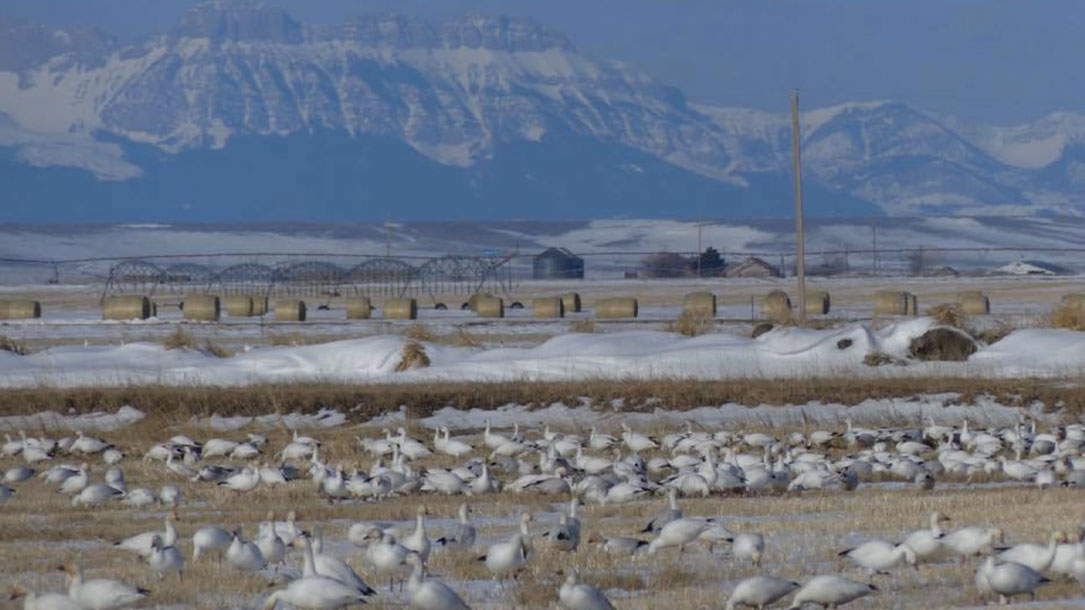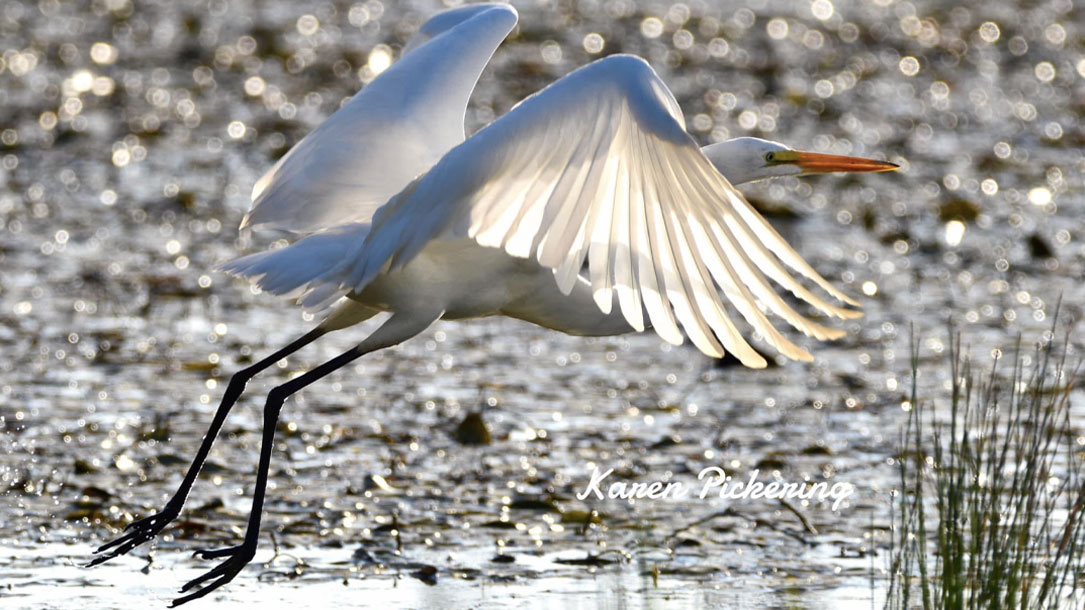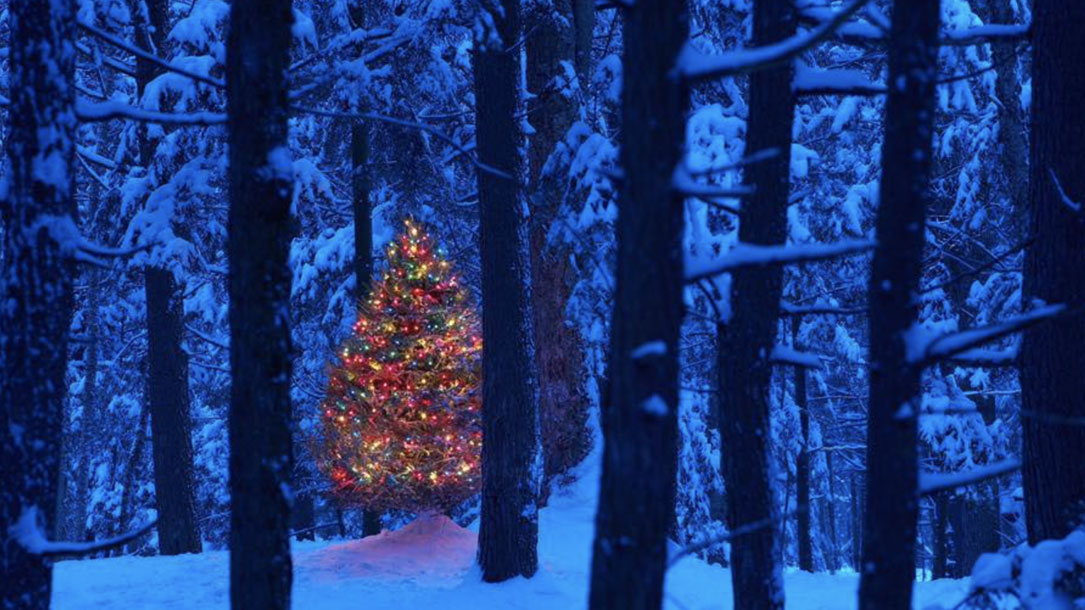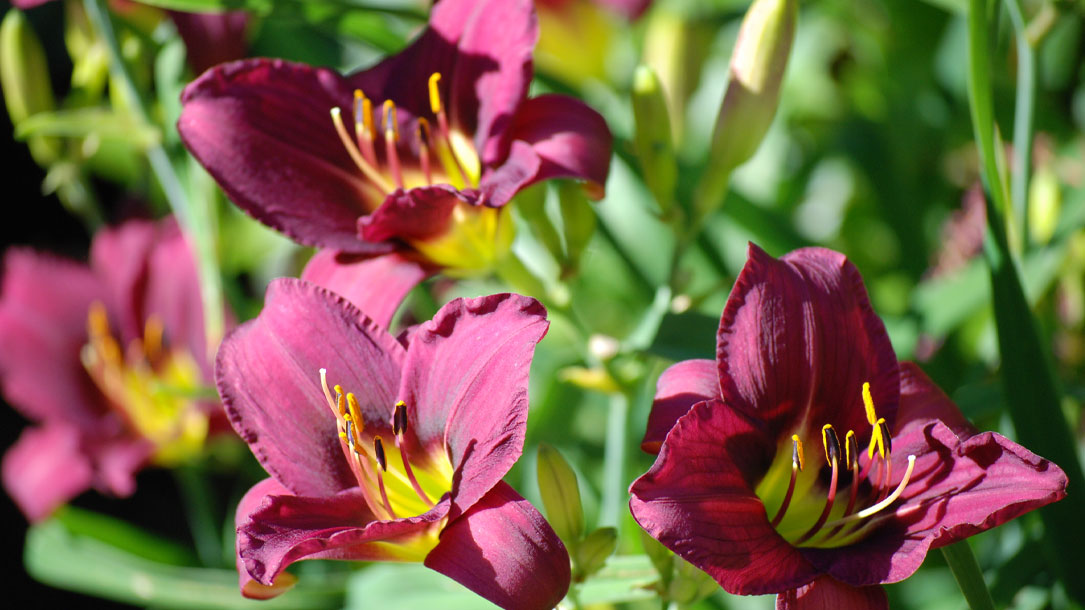
Reflections from Judy, January 2020
The climate change news is coming at us fast and furious. It’s now now regularly cited in the news, in reports, as part of risk assessments, and in economic impact studies.
The insurance industry is paying attention. Articles like “Why climate change is the new 9/11 for insurance companies” are appearing more often.
So is the investment industry, with BlackRock (the world’s largest fund manager) announcing it will put sustainability at the heart of its investment decisions.
Land trusts and conservation organizations are starting to consider how to “walk the walk” in relationship to their investments, too. And many are realizing that conserving land is more critical than ever—and it won’t be enough to conserve the species and farms we know and love.
Remember that, optimistically speaking, natural climate solutions in the U.S. are currently believed to be able to contribute 21% of what we need if we significantly reduce fossil fuel usage in the next 10–15 years. The paradigms are shifting on what that means. For example, in some parts of the country, soils may be a more stable carbon sink than trees, given climate change impacts on forests.
Farmers, forest owners, wildlife managers, religious organizations, research organizations, and community members are recognizing that the time to act is now. We are going to need to be creative. Let’s find funding for forest carbon projects with smaller parcels, state-wide incentives for elevated solar projects on farmland at the community level, and soil regeneration efforts. Let’s find funding for people to insulate their homes and purchase electric cars, trucks, and tractors.
I suggest we also recognize energy conservation is a big part of the solution, too—and we collectively work to inspire incentives to help people and businesses recognize just that. It can be part of your land trust’s mission to join coalitions (as they might lobby for land protection funding) working to reduce fossil fuel usage to save the lands and waters they have pledged to conserve.
It takes time for policies to actually be implemented (beyond the stated goals) and that means a great deal of effort and new thinking. Because we don’t have a lot of time if we want to stay below the 2 degree Celsius level and avoid massive extinctions. That’s why I’m counting on you.
Best wishes,


Reflections from Judy, New Year’s 2020
I wanted to do something a bit different in this eNews.
Let me start by wishing you Happy New Year. As someone who cares about slowing down climate change, it’s a tough time in our lives right now. Things are pretty bleak. So, “Happy New Year” may sound a bit shallow—but I say it with hope and conviction.
This eNews, therefore, features messages of change and hope. I’m not featuring Greta Thunberg nor the many youth that are stepping up to create change, because you know about them.
Rather, I wanted to share some articles and a short video from, and about, those folks with whom you may be less familiar.
Natural climate solutions are part of this work. We need to continue to conserve lands important to our communities and the plants and animals who depend on them for food and habitat. Ramping up the protection of these lands will continue to be a central path toward a more sustainable future.
However, as you know, natural climate solutions are currently thought to provide about 21% of the climate solutions in this country, if we reduce fossil fuel emissions rapidly over the next 10–15 years. That means we will need to embrace energy conservation, renewables, and community solutions as part of our conservation work.
The good news is, as the people below note, change is possible. We can change. We are changing.
It’s up to us to convey to those in our communities that the climate solutions are possible and we can, and must, act quickly. We can do so with grace, compassion, and authentic partnerships. And people like you, and land trusts across the country, are starting to do just that.
This is why I want to wish you a happy, and hopeful, New Year. Thank you for caring and for spurring action in your own ways.
Best,


Reflections for land trusts, December 2019
I’m hoping you are able to take some moments over the next several weeks to spend time outside.
It’s important for us—those of us who care deeply about the lands and waters, and all things living in and around them. If you’re like me, you find solace in things in life that are often overlooked—the sounds of birds shaking snow off their backs, the splashing of water droplets bouncing off rocks in a stream, the wind in the trees.
This issue of Land Trusts Taking Action focuses on partnerships, selling carbon credits, communication efforts, and coming together. The land trusts are large, small, and in-between.
I selected these land trusts to show you how size and scale isn’t the issue so much as finding your place and starting to take action.
Talking about climate change is a major part of this effort. To be effective we need to help people connect the dots in a manner that focuses on what they care about and offer climate solutions.
On a side note, I’m finding it a challenge to come up with articles about land trusts working to slow down climate change. It would be great if you could explore how your local land trust could increase the search engine optimization for stories so that people can find articles on the webs.
Better story-reach will help with building momentum and growing awareness that land trusts are part of the climate solution.
Thank you for caring and best wishes for a peaceful holiday.
Best,


Reflections from Judy, December 2019
I hope you had a good Thanksgiving. I have to say, I’m thankful for people like you who care about taking action to slow down climate change.
This past week came with more clarification about the need to get off fossil fuels as fast as we can. As Forbes Magazine reports, “We are in an unprecedented era, at no point in human history ha[ve] carbon dioxide levels been this high, presenting concerning questions over what lies ahead…
This week the World Meteorological Organization published their yearly report on the ‘State of Greenhouse Gases in the Atmosphere,’ compiling data up to 2018.”
You and your local land trust can help people understand that natural climate solutions are important, but they are likely to play a less significant role (based on the current estimate of 21%) if we don’t slow down climate change fast by getting off fossil fuels, increasing energy efficiency, and ramping up renewables.
I’m a bit concerned that those who love land and water may be lulled into a feeling of security if we only talk about natural climate solutions—and that would be a disastrous place to be.
There’s good news, of course. Farmers continue to be part of the solution to climate change. People are talking to their kids about climate change, Greta is having a real impact, and Audubon’s interactive report is helpful in visualizing our climate future.
As we go into the holiday season, let’s remember that we need each other. Working on climate issues can feel lonely. Often it’s work that we do on top of everything else we already have committed to doing. But it’s a big part of the work that will conserve and benefit the lands and waters, and communities, you love for generations to come.
Best,


Reflections for land trusts, November 2019
I’m witnessing a growing interest in what I call “elevated solar.” This is solar designed in a manner that allows for large animals, vegetables, and crops to be grown in and around the solar panels (as shown in one example below). Land trusts are starting to express interest given that it’s compatible with a variety of agricultural practices.
The panels are lifted up (often starting at seven feet) and spread farther apart—both on the same “rack” and between racks—to allow more sunlight to hit the ground.
This means that the solar density isn’t as high as it would be if there were continuous banks of solar panels. However, it gives farmers and ranchers more options.
In Massachusetts, there is added incentive to allow this type of solar to be competitive with traditional ground-mounted solar. From what I understand, this is critical.
If we want to slow down climate change to a level that will avoid massive extinctions of plants and animals, we will have to move off fossil fuels and ramp up our use of renewables.
Remember that natural climate solutions are important and can, with the current estimate, provide up to 21% of the solution. Andrew Bowman of the Land Trust Alliance lays out a clear call to action to help make it possible.
If you want additional information, check out the widely-referenced, peer-reviewed study published last year in Science Advances from The Nature Conservancy and 21 institutional partners. They found that nature’s contribution could equal 21% of the nation’s current net annual emissions by adjusting 21 natural management practices to increase carbon storage and avoid greenhouse emissions.
The news that climate change is picking up speed isn’t good, but we have choices. We are going to need to use all the tools we have. In addition to direct land conservation and related climate management, elevated solar gives us another tool in our conservation toolbox. It’s an idea that land trusts can help spread and—just as land trusts advocate for conservation funding—we could advocate for incentives to conserve additional land and make this type of solar possible, too.
Best,


Reflections from Judy, November 2019
Halloween came with some pretty scary weather throughout the country. I’m hoping you and your community are doing okay.
This past month also brought with it a number of interesting studies about the impacts of climate change, strategies to address it, and the increasing urgency to help the conservation community see ourselves as part of the solution.
Natural climate solutions (plants, soils, water, fungi, etc.) still have a chance to play a significant role in slowing down climate change. Here in the U.S., it is projected that natural climate solutions—if we simultaneously increase energy conservation and renewables in the next 15 years—would reduce climate change by as much as 21%.
Last year, the peer-reviewed study in Science Advances from The Nature Conservancy and 21 institutional partners found that nature’s contribution to reducing climate change could be as much as 21% towards absorbing current net annual emissions. This would occur by adjusting natural management practices to increase carbon storage and avoid greenhouse emissions.
That’s why land trusts are realizing that getting off fossil fuels is also a critical part of the climate solution—and part of the conservation solution. Protecting land won’t be enough—even if we do a lot more of it. We have to encourage renewables, in a compatible manner with land and water, as much as possible, to save the lands and waters we love.
Check out the interactive Audubon Report reference below if you are interested in the survival of hundreds of species of birds.
I’m interested as to what you think, so please email me with your thoughts and questions.
Best,


Reflections for land trusts, October 2019
I’m feeling encouraged.
Land trusts are realizing that business as usual, including how they talk about land and water conservation, won’t be enough—nor fast enough—to inspire adequate action to slow down climate change in a meaningful way. As a result they are learning, changing, and adapting to update their approach.
An example of this is the recent National Land Trust Conference in Raleigh, North Carolina, where climate change was a topic of considerable interest. Andrew Bowman, president of the Land Trust Alliance, spoke at length on the power of natural climate solutions. (I’ll post the link when they offer it.)
When you combine this with community conservation efforts (to serve more people, connect people to each other and to land and water, and bring more people to land and water in a way that is meaningful to them), there’s some real traction starting to happen.
That’s why bringing people along the “climate journey” with you is so important. The next 10 to 15 years will likely set our path for generations to come.
You’ll see in the examples below that land trusts are going beyond the standard approach to land conservation and finding ways to infuse involves climate change with community, communications, and stepping up the pace of conservation. For some, this work involves being part of the Climate Strikes, incorporating renewables and natural climate solutions into conserved lands, drafting conservation easements to reflect change, and sharing compelling stories.
Best,


Reflections from Judy, October 2019
The past couple of weeks have built an even greater case for the additional action needed to slow down climate change.
As you may recall, natural climate solutions (soils, trees, waters, animals, etc.) could amount to 21% of the solution in this country if we act in a significant way over the next 10–15 years.
But to ensure that agricultural and wildlife lands retain their vitality, we will also need to consider how we can support a substantial increase in renewable energy.
That means resetting our perspectives related to the place of renewables in the lands and waters we know and love.
Why?
Because if we don’t tap into both natural climate solutions and a simultaneous ramping up of renewables—and do so throughout the country—we will very likely lose much of what we, as people and communities who care about land conservation, have pledged to conserve. It’s that simple.
Yet, for many, it’s a considerable shift in the paradigm. We will need to think more broadly rather than focusing on conserving only the lands and waters in our area; climate change makes it clear that we are in this together.
Add to this new way of thinking the realization that climate scientists have been underestimating (not overestimating) the pace and impact of climate change, and you have very good reason to embrace the reality that conservation now means investing in these two compatible approaches.
Thank you for all you do around climate change and conservation to raise the issues and concerns, to follow the science, and to figure out ways to act. As always, feel free to call or email me with ideas and questions.
Best,


Reflections for land trusts, September 2019
This past month saw a growing awareness across the land conservation community about the importance of what local, state-wide, and/or regional land trusts and conservation groups can do to help slow down climate change. Check out Kennebec Land Trust, American Farmland Trust, and Massachusetts Audubon in their work to walk the talk about climate change.
Land conservation for generations to come means addressing climate change now, and these three groups get it.
It can’t be talking about the need and then finding ways to say it’s not relevant to the lands and waters you and your community want to conserve.
I have received several emails from people like you you asking for additional ideas on what land trusts could do to broaden their partnerships and further explore how climate change and community conservation could be intertwined.
To that end, I’ve included several ideas related to how you could spread the word about renewables being compatible with agriculture, working with artists, and partnering with religious organizations who see the urgency behind climate change. I’ll be interested to hear what you think.
Best,


Reflections from Judy, August 2019
The past couple of weeks have been filled with new research documenting the accelerating pace of climate change. At the current pace we are expected to exceed 4 degrees Celsius.
If that happens, we will face mass extinctions; increased loss of life; agricultural and forestry collapse; billions of dollars of economic loss; and mass migrations of people—and that’s only here, in the U.S.
So, we can’t let that happen. Period.
What does that mean? We need to share the news of these impacts based upon what people care about and help them see the solutions, around them.
If you or your local land trust want land and water to be conserved for generations to come, it will be important to recognize that we need you to talk about how climate change is impacting—and will impact—the things people love.
It also may mean your land trust has to adapt to spending more time working to slow down climate change, as the very survival of what many are working to conserve is increasingly at risk.
The good news is that land trusts are already starting to move in that direction. The articles below are here for you to consider how you might share them and help people connect the dots on what you, your community, and your land trust, are doing to slow down climate change.
Best,













